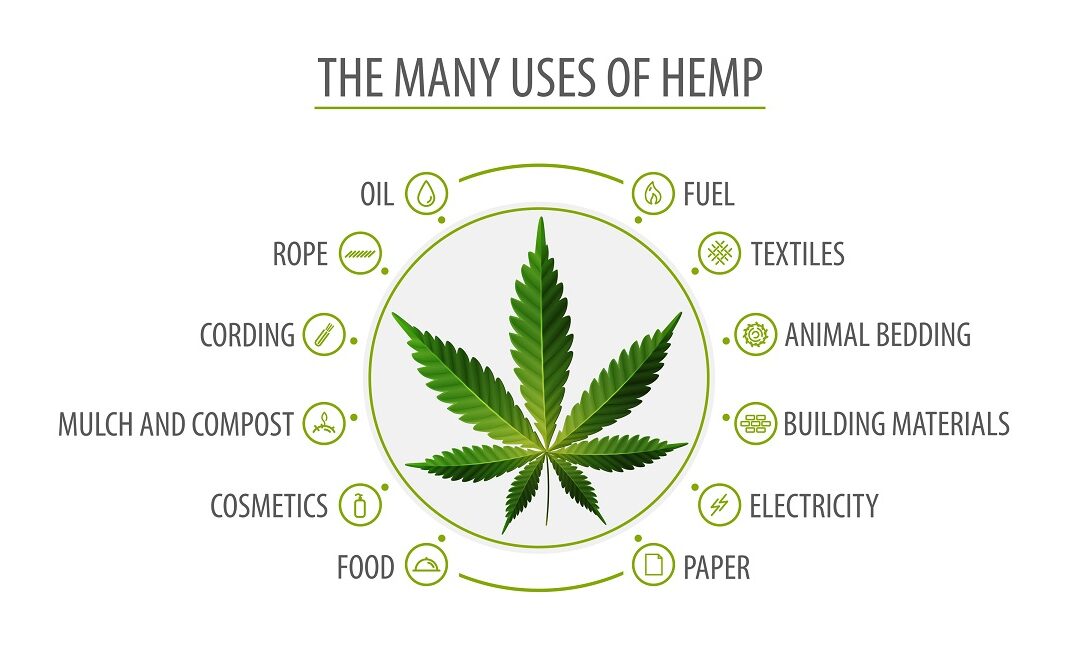The Truth About Hemp – Can it Help Save the Planet?
Hemp is a member of the cannabaceae family of plants, which also includes the more common Cannabis Sativa. Unlike “regular” cannabis, industrial hemp contains very low – often undetectable – levels of THC (the intoxicating compound that causes the high cannabis is famed for). It is used in various commercial and industrial applications, including paper, textiles, clothing, biodegradable plastics construction, health food, and fuel.
Hemp has been used for millennia in various applications, and its popularity is on the rise again in recent years as more people learn about its many uses. Some believe that hemp could help save the planet from environmental destruction, while others think it has the potential to revolutionize the way we live.
Here are some of the ways that hemp just might help save the planet:
1. Hemp Can be Used to Make Biodegradable Plastics
Traditional plastics are made from fossil fuels, which contribute heavily to climate change when burned. On the other hand, biodegradable plastics are made from renewable plant sources like hemp, and bacteria or other organisms can break them down over time. Biodegradable plastics (especially those that are hemp-based) are also just as effective and reliable as traditional plastics. So, using biodegradable plastics made from hemp could help reduce our dependence on fossil fuels and lessen our environmental impact.
2. Hemp Can Be Used as a Food Source
Hemp seeds are a nutritious food source that contain protein, essential fatty acids, and a variety of other nutrients. They can be eaten whole, ground into a powder, pressed for cooking oil, or used to make things like hemp milk, cheese, and other dairy alternatives. Hemp seeds are also a good source of vegan omega-3 fatty acids. Adding hemp to your diet could help you get the nutrients you need while reducing your overall environmental impact.
3. Hemp Can Be Used as a Construction Material
Hempcrete is a mix of hemp hurds (the fibrous, woody inner part of the plant) and lime, and it can, in many situations, be used in place of concrete or other traditional building materials. Hempcrete is more insulating than concrete, which can help reduce energy costs in buildings. It’s also much lighter than concrete, requiring less energy to transport.
4. Hemp Can be Used to Make Paper
Hemp paper is stronger and more durable than traditional paper made from trees. It can also be recycled more times than paper made from wood pulp. Plus, since hemp has a faster growth cycle, making paper from hemp can help to reduce deforestation and the pollution caused by the paper industry.
5. Hemp Can Be Used to Make Clothing
Hemp fabric is soft, durable, and absorbent – and it only gets softer the more it’s worn and washed! It’s also much cooler in summer and warmer in winter than other fabrics like cotton. Hemp clothing can be a great alternative to synthetic fabrics made from petroleum, which are not only bad for the environment but are also not biodegradable – meaning that once they’re made, the only place they can end up is in landfills.
6. Hemp Can Be Used as a Fuel Source
Hemp can be converted into biodiesel, a renewable and environmentally friendly alternative to traditional fossil fuels. Biodiesel made from hemp produces far fewer emissions than diesel made from petroleum. Shifting away from traditional oil would be a massive step towards diverting climate change and would provide a far more sustainable alternative.
Bottom Line
Hemp has the potential to be a sustainable and eco-friendly resource that can help us reduce our overall impact on the environment. It’s versatile, durable, and renewable and can be used in a wide variety of applications. If we use more hemp as a society, we could help save the planet from the environmental destruction we’ve wrought over the years.
Thanks for reading,

Social Share:


